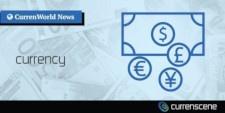WASHINGTON (Reuters) - U.S. economic growth will probably accelerate this year before slowing in 2019 to well below the Trump administration’s 3 percent target as a fiscal stimulus fades, congressional researchers projected on Monday.
FILE PHOTO: Shoppers ride escalators at the Beverly Center mall in Los Angeles, California, U.S., November 8, 2013. REUTERS/David McNew/File Photo
In an updated economic outlook, the nonpartisan Congressional Budget Office (CBO) projected that inflation adjusted or real gross domestic product (GDP) would grow 3.1 percent this year, exceeding 2.2 percent growth in 2017 due to lower income taxes, increased government spending and private investment.
The government slashed corporate and personal income taxes in January in a $1.5 trillion package and the U.S. Congress passed a $1.3 trillion spending bill in March.
This has buoyed consumer and business spending as well as government outlays, which combined with accelerated soybean exports to lift the economy to a 4.1 percent annualized rate in the second quarter from a 2.2 percent pace in the January-March period. The April-June growth rate was the highest in nearly four years.
But the CBO said it expected growth to slow in the second half as jolts to consumer spending and agricultural exports either fade or reverse. For instance, some second-quarter soybean exports were aimed at beating Chinese tariffs that took effect in July and cut future shipments.
“In 2019, the pace of GDP growth slows to 2.4 percent in the agency’s forecast, as growth in business investment and government purchases slows,” CBO director Keith Hall said in a statement.
Republicans have said the tax cuts, which increased the nation’s debt, would pay for themselves through strong economic growth. The Trump administration has said the economy can sustain 3.0 percent growth over the long term, an assertion many



